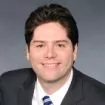On July 25, 2018, the Federal Circuit overturned a district court denial of JMOL and found that the asserted claim of U.S. Pat. No. 5,686,738 (the "'738 patent") was not enabled as a matter of law.
The '738 patent relates to the field of light-emitting diodes (LEDs), which are semiconductor devices that typically consist of multiple layers of solid-state materials. Claim 19, the only claim-at-issue, is directed to a semiconductor device that includes a growth layer "grown on" a non-single crystalline buffer layer. During claim construction, plaintiff-cross-appellant Boston University (BU) successfully argued that "grown on" meant "formed indirectly or directly above" the buffer layer and that "non-single crystalline buffer layer" meant a layer of material that is not monocrystalline. Based on this construction, Clamim 19 provided for six possible combinations of a growth layer and a buffer layer. The enablement issue here centered on whether the '738 patent taught one of those combinations, namely, a monocrystalline growth layer formed directly on an amorphous buffer layer.
The defendant-appellants–Everlight, Epistar and Lite-On (collectively, "Defendants") –argued that Claim 19 is not enabled because the '738 patent's specification does not teach one of skill in the art how to make the claimed semiconductor device with a monocrystalline growth layer grown directly on an amorphous buffer layer through epitaxy. In fact, Defendants' expert testified that it is impossible to epitaxially grow a monocrystalline film directly on an amorphous structure, a statement with which BU's expert agreed. Based on the expert testimony, the Federal Circuit concluded, "the specification does not enable what the experts agree is physically impossible."
BU attempted to sidestep this shortcoming by arguing that the '738 patent teaches other ways to grow a monocrystalline layer directly on an amorphous layer. The Federal Circuit rejected BU's argument, noting that BU could not identify any passage of the specification that discloses how to grow a monocrystalline layer directly on an amorphous layer.
BU also pointed to testimony indicating that others have successfully grown a monocrystalline layer directly on an amorphous buffer layer. The district court acknowledged that the testing occurred after the '738 issued, but admitted the evidence to rebut the argument that such growth was impossible. The Federal Circuit found this evidence to be nonprobative of enablement, reasoning that "[t]he inquiry is not whether it was, or is, possible to make the full scope of the claimed device . . . . The inquiry is whether the patent's specification taught one of skill in the art how to make such a device without undue experimentation as of the patent's effective filing date." Therefore, "[s]imply observing that it could be done—years after the patent's effective filing date—bears little on the enablement inquiry."
The court concluded that, "to some extent, BU created its own enablement problem" by seeking a specific claim construction, but failing to defend against an enablement challenge as to the claim's full scope. That is, "if BU wanted to exclude others from what it regarded as its invention, its patent needed to teach the public how to make and use that invention. That is part of the quid pro quo of the patent bargain."
Practice Tip: Be careful what you wish for. This case provides a good example of how a successful argument in favor of a broad claim construction may backfire on a plaintiff if the patent fails to enable the full scope of the broad construction.
Trustees of Boston University. v. Everlight Electronics Co., Ltd., Everlight Americas, Inc., Epistar Corporation, Lite-On Inc., Lite-On Service USA, Inc., Lite-On Technology Corporation, Lite-On Trading USA, Inc., Nos. 2016-2576, 2016-2577, 2016-2578, 2016-2579, 2016-2580, 2016-2581, 2016-2582, 2016-2591, 2016-2592, 2016-2593, 2016-2594, 2016-2595 (Fed. Cir. July 25, 2018
The content of this article is intended to provide a general guide to the subject matter. Specialist advice should be sought about your specific circumstances.



